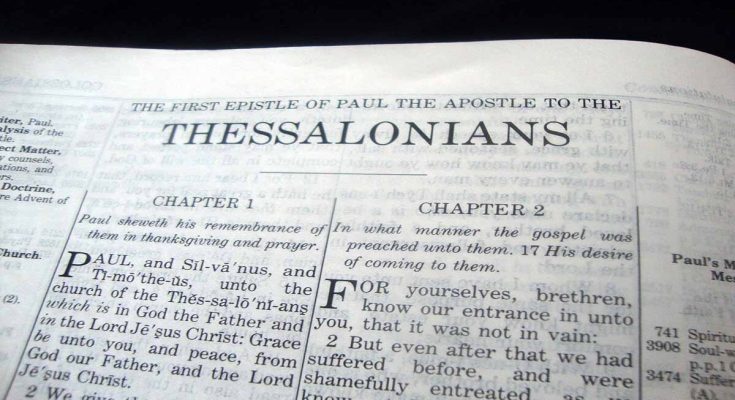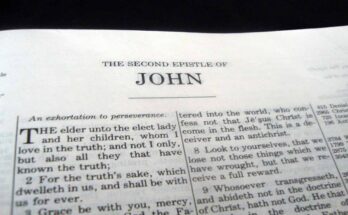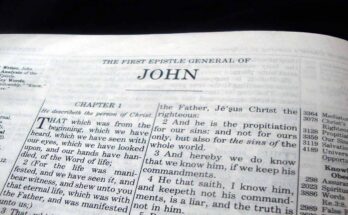The Book of First Thessalonians
Paul and his companions were faithful to bring the gospel to the Thessalonians in the midst of persecution. The Thessalonians had only recently become Christians, and yet they had remained faithful to the Lord, despite the fact that the apostles were not with them. Others have been faithful in bringing God’s Word to us. We must remain faithful and live in the expectation that Christ will return at any time.
Thessalonica, strategically located on the Via Egnatia, was a bustling port city and a melting pot of various cultures. Against this vibrant backdrop, the Apostle Paul’s initial visit, as chronicled in Acts 17, marked the inception of the Thessalonian church. The challenges faced by these early believers were not only cultural but also spiritual, as they navigated their newfound faith within a city steeped in pagan influences.
Writer of First Thessalonians
Written by the apostle Paul, in the company of Silvanus (Silas) and Timotheus (Timothy) (1 Thessalonians 1:1). The vocabulary, style, and thought of the Thessalonian correspondence are genuinely Pauline. Both letters bear his name as author and were most likely written from Corinth.
Paul’s authorship is evident in the letter’s internal claims and stylistic characteristics, aligning closely with his other recognized epistles. This attribution not only underscores the apostolic authority of the letter but also provides a vital link to the historical development of Christian theology and pastoral guidance.
Date Written
Time and place are uncertain. It is generally thought that this was the earliest of Paul’s epistles and was probably written from Corinth between 49 and 54 A. D.
Regarding the dating of First Thessalonians, scholars generally agree that it was written around 51 AD, making it one of Paul’s earliest epistles. This dating places the letter within a specific historical and theological context, offering insights into the concerns and challenges faced by the Thessalonian church in its infancy. The urgency with which Paul addresses topics such as the imminent return of Christ and moral conduct reflects the immediate pastoral needs of the community. By exploring the authorship and dating of this epistle, we gain a nuanced understanding of the Apostle Paul’s role in shaping early Christian thought and his pastoral care for the Thessalonian believers amidst the dynamic tapestry of the first-century Mediterranean world.
To Whom Written
To the “ekklesia of the Thessalonians” (1 Thessalonians 1:1). First Thessalonians is addressed to the Christian community in Thessalonica, a city in ancient Macedonia. The letter is directed specifically to the believers in Thessalonica, a community that had formed as a result of the Apostle Paul’s missionary efforts in the region. In his initial visit to Thessalonica, as recorded in the book of Acts (Acts 17), Paul preached the Gospel, and a significant number of people, both Jews and Gentiles, responded in faith, forming the foundation of the Thessalonian church. The epistle reflects Paul’s deep concern for the spiritual well-being and growth of this community, addressing various aspects of Christian living, doctrinal clarification, and encouragement in the face of challenges.
Purpose of First Thessalonians
The purpose of the book of First Thessalonians was to encourage the leadership in Thessalonica to urge the believers to stand fast in the persecution they were facing, even as Paul had heard from Timothy that they had done. Paul also dealt with several problems among them such as sexual immorality and the way they were grieving over those who had died in the persecution.
Historical Setting
Paul founded the church at Thessalonica in A.D. 49 or 50 during his second missionary journey (Acts 17:1-9). The church consisted of a few Jewish converts and a larger number of former pagans (1 Thessalonians 1:9; Acts 17:4). Desiring not to handicap the young church, Paul worked at his own job as a tent maker – and at some sacrifice to himself, he adds (1 Thessalonians 2:7-12) – twice receiving aid from the ever faithful Philippians (Philippians 4:6).
Paul’s stay in Thessalonica was cut short, however, when the Jews gathered some local troublemakers and an uproar broke out; Paul was escorted out of town, leaving Timothy to patch up the work (Acts 17:1-15). Separated so suddenly from the infant church, Paul describes his feelings as one who had been “orphaned” (Greek text, 1 Thessalonians 2:17).
Once he was safe in Athens, Paul sent Timothy (who apparently had since rejoined him) back to Thessalonica to strengthen and encourage the believers. When Timothy returned to Paul, who had since moved on to Corinth (Acts 18:1-5), he brought news of the love and faith of the Thessalonians. In response to Timothy’s encouraging report, Paul wrote the first epistle to Thessalonica. Evidently, the Thessalonians were unsettled over the second coming of Christ, because Paul discusses the issue in the subsequent letter as well.
Strong’s Concordance of the Bible
The New Strong’s Expanded Exhaustive Concordance of the Bible is a valuable tool for pastors, teachers, and students of the Bible. This expanded edition is computer generated for highest accuracy, and the Hebrew and Greek dictionaries have been augmented with definitions from the classic reference work Vine’s Complete Expository Dictionary of Old and New Testament Words.
Theological Contribution
Paul writes the epistle in the spirit of a true pastor. He is overjoyed with their enthusiastic response to the gospel and longs for the day when they will stand with him in the presence of the Lord Jesus.
He compares himself to a nursing mother caring for her children and to a father working on behalf of his family. He gives himself body and soul to the Thessalonians and dares to hope that they will give themselves likewise to God.
Special Consideration in First Thessalonians
On the subject of the Second Coming, Paul assumes the Thessalonians what will happen, but not when it will happen. The end, however, will follow widespread rebellion and abandonment of the faith. Paul appeals for them to be level headed during the time of trouble and warns Christians not to despair when they see the Antichrist pretending to be God.
Scripture Study Resources
ESV Study Bible – Study Bibles give you a deeper understanding of God’s Word with tools for life application like commentary, maps, charts, concordance, and study notes. Search our popular translations- NIV, ESV, NKJV, KJV and more!
Believer’s Bible Commentary: Second Edition – A Bible commentary is a written, systematic series of explanations and interpretations of Scripture. Commentaries often analyze or expound on individual books of the Bible, chapter by chapter and verse by verse. Some commentary works provide analysis of the whole of Scripture.
The New Strong’s Expanded Exhaustive Concordance of the Bible – The best concordance for word study! This exclusive new edition of a legendary classic puts generations of biblical research at your fingertips. A valuable tool for pastors, teachers, and students of the Bible.
Vine’s Complete Expository Dictionary of Old and New Testament Words – This classic word study resource allows you to study the meaning of biblical words in the original languages without spending years learning Greek or Hebrew. A great resource for students, seasoned pastors, and anyone who enjoys biblical word studies–even if they have little to no formal training in Hebrew or Greek.
Halley’s Bible Handbook – The beloved and classic Bible companion has been thoroughly updated, while retaining its time-honored features and Dr. Halley’s highly personal style, to offer even greater clarity, insight, and usefulness.
Click here to print or download the scripture outline “First Thessalonians: Holiness in Light of Christ’s Return“





